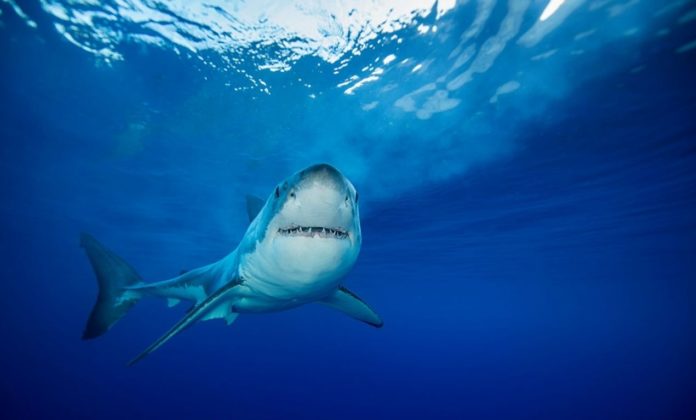New research confirms theories that great white sharks bite humans due to misunderstanding.
“Surfers are the highest-risk group for fatal shark bites, especially by juvenile white sharks,” explains lead author Dr Laura Ryan.
White sharks, along with bull and tiger sharks, are responsible for most of the human bites.
“We found that surfers, swimmers and pinnipeds (seals and sea-lions) on the surface of the ocean will look the same to a white shark looking up from below, because these sharks can’t see fine details or colours,” she says.
Despite her involvement in shark-bite studies, Ryan says this study will help scientists better understand why some sharks bite humans.
In response, the Neurobiology Lab is developing non-iAs a result, researchers at the Neurobiology Lab are developing non-invasive vision-based gadgets that could protect surfers and swimmers from shark bites.
Ryan describes the current study, which was published in the Journal of The Royal Society Interface, as a practical test that expanded on the team’s years of effort to understand how sharks perceive by investigating the neurobiology of white sharks’ visual systems.
In a large tank at Taronga Zoo, the team examined underwater video of rectangular floats, seals and sea lions swimming, humans swimming different strokes, and humans paddling on variously sized surfboards, with both stationary and moving cameras oriented toward the water surface.
“We attached a GoPro to an underwater scooter, and set it to travel at a typical cruising speed for predatory sharks,” says Ryan.
Back at Macquarie, the researchers used significant shark neurobiology data to add filters to the video footage and then created modelling algorithms to replicate how a juvenile white shark might interpret the movements and shapes of various items.
“I didn’t realise being a scientist would involve quite so much coding,” admits Ryan – however, the results were fascinating: when humans swim and paddle surfboards, they resemble seals and sea lions to a juvenile white shark.
Smaller surfboards were more difficult to distinguish from pinnipeds, suggesting that they may be a more appealing quarry to white sharks than longboards or even stand-up paddleboards, which normally target smaller, young pinniped pups.
Most sharks are likely colorblind, and the silhouette shape is the major visual cue for white sharks, thus colours on boards and wetsuits are unlikely to influence sharks’ perceptions of floating humans.
However, the researchers are also looking into additional ways to influence how sharks perceive different shapes, such as the careful use of LED lights.
While the risk of shark bite is extremely low, Australia continues to be the world’s most dangerous shark playground, accounting for six of the world’s ten confirmed unprovoked fatal shark encounters in 2020 alone.
Shark bites on people have increased in the last 20 years, according to Ryan, and surfers may be at a higher danger because they spend significantly more time in the ocean than swimmers, frequently in deeper water.
“Sharks use a range of sensory cues to distinguish between different objects and zero in on their food, and these differ in sensitivity between shark species,” says Ryan.
White sharks have excellent vision, and young are more dangerous to humans than older, larger white sharks with superior vision.
Professor Nathan Hart, who directs the Neurobiology Lab and is the study’s main author, believes young white sharks must learn what to eat and that their diet will alter as they grow.
“When white sharks reach around 2.5 metres in length, their jaws begin to harden so they can take on bigger prey like seals,” he says.
“They need to develop a search image for these prey items and combine that with other sensory information; it’s a learning process that could be prone to mistakes.”
While sharks are dangerous, they are also endangered, and our fear of sharks, despite the small risk of attacks, has resulted in preventative tactics such as shark nets and drumlines, which damage marine life.
“Understanding why shark bites occur can help us find ways to prevent them, while keeping both humans and sharks safer,” says Ryan.
Image Credit: Getty
You were reading: Sharks prey on surfers because they mistake them for seals as their food
